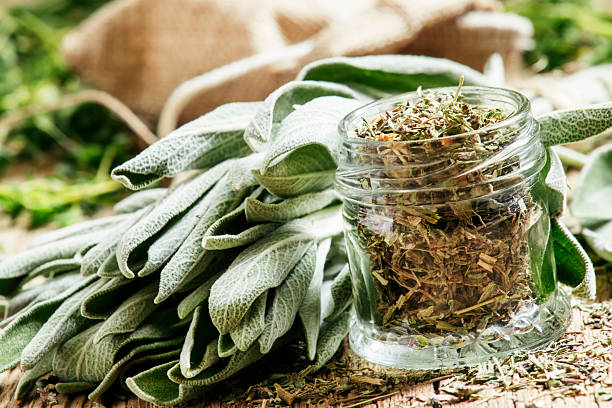A herb has grown for every dish. If it’s not fresh on the windowsill or in the garden, the dried version has to step in. Preferably one that has been lovingly made from their own harvest.
These herbs dry well
Surplus herbs that grow in local gardens dry well: mugwort, savory, chamomile, lavender, marjoram, oregano, peppermint, sage, thyme, and lemon verbena.
Even unused leftovers from purchased herbs can be turned into a small dry stash. The main thing is that they are dried while they are still fresh and flawless.
You should dry these herbs!
In the diverse family of spicy herbs, there are some representatives that are not only excellent for drying, but also gain in aroma intensity through this process. Of the herbs listed above, they are:
- marjoram
- oregano
- Rosemary
- thyme
Only dry these herbs in exceptional cases
When we use garden herbs in the kitchen, we want to smell and taste their typical aroma. However, this disappears with some herbs as soon as the drying process begins. Therefore, you should only use the following herbs fresh:
- basil
- dill
- Parsely
- chives
- lemon balm
If you have plenty of fresh stalks of these types of herbs that you cannot use up in a timely manner, then note the following points when drying:
- Dry herbs quickly
- Shorten the drying process with electronic devices
Once these herbs are completely dried, they should be chopped up ready for use, and stored in a dark and tightly sealed container. But even under these circumstances, their aroma will dissipate more quickly than is the case with the other herbs. It is therefore better to dry a small amount of it and use it up promptly.
Herbs that are simply better fresh
The last group of herbs includes all specimens that should only be used fresh. Some of them are difficult to dry, while others hardly have any taste afterward. These include Borage, cress, lovage, burnet, and sorrel.
Aroma-friendly harvest and preparation
Many garden herbs contain essential oils that give them their special taste and also have a healing effect on us humans. However, the concentration of essential oils fluctuates throughout the day. Before picking, find out what time of day is ideal for a particular herb.
In addition, you should observe the information listed below so that you can save as much aroma as possible in the dry version.
- do not chop before drying
- do not wash extensively
- Just shake out the dirt
If the garden herbs are heavily soiled, you must of course wash them. Afterward, however, they should definitely be dabbed dry with absorbent kitchen paper.
Suitable methods for drying
We have three different options for drying herbs:
- air drying,
- Drying in the oven
- Drying in the dehydrator
Another option would be to quickly dry herbs in the microwave on low. However, the microwave is not exactly squeamish about the aroma and should rather not be used.
Air-dry garden herbs
Air drying works with the time factor. The moisture is slowly and gently removed from the herbs, leaving what is important to us: the typical taste. The essential oils are also retained during air drying and the dry garden herbs can continue to be used for the benefit of our health.
- Clean the herb of dirt. Put the stalks in a sieve and shake them gently. You should only use water to clean them if they are heavily soiled.
- Pat wet herbs dry with absorbent kitchen paper. If necessary, let them dry a little more in the air.
- Loosely tie several branches together in small bundles.
- Hang the bundle’s upside down. Leave enough space in between to allow air to circulate freely. A continuously warm, shady, and wind-protected place is ideal.
The air drying of garden herbs takes between 3 and 5 days, depending on the variety. Before you hang the garden herbs again, make sure that they are really dry. Especially when the days are not very warm, drying can take a little longer.
Herb drying in the oven
A higher temperature can be set in the oven than is the case with air drying. As a result, the garden herbs can of course lose their moisture more quickly.
However, with this type of drying, keep in mind that the quality of the result will be poorer. Not only does the typical aroma suffer, but the concentration of healing ingredients also decreases. If the latter is in demand, the oven is out of the question for drying.
- Roughly chop cleaned garden herbs
- Line the baking sheet with parchment paper
- Spread herbs on parchment paper
- set the lowest temperature level
- never above 50 °C
- Leave the oven door ajar
- Turn herbs in between
Drying in the oven does not take days, but can take 2 to 5 hours depending on the variety. Check from time to time how far the drying has progressed. The herbs should not be exposed to heat longer than absolutely necessary.
Then leave the herbs to stand for a while so that they can cool down completely and the remaining moisture can evaporate.



